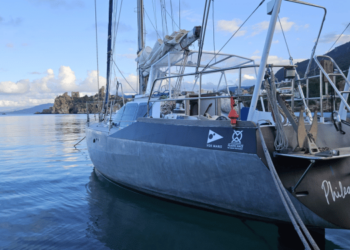New space for agriculture in the ocean – Starting in 2019, the pioneers of the Canadian agricultural start-up Alora, Rory Hornby and Luke Young, have set themselves the ambitious goal of revolutionising the way we grow land-based crops through genetic engineering.
Alora’s mission is to ‘activate’ salinity tolerance in land-grown plants, such as rice, in order to tackle world hunger while minimising the use of precious fresh water during the cultivation process. In parallel, the company aims to solve the problem of methane emissions often associated with traditional rice cultivation techniques. This is achieved by growing rice in irrigated soils with salt water, an environment that hinders the growth of methane-emitting bacteria.
As Alora’s sustainability manager Rory Hornby explains, ‘We reactivate that dormant salt tolerance. So these plants can thrive, whether they’re floating on the surface of the ocean, or in soils that have been irrigated or affected by rising sea levels, climate change, or overuse of fertilisers’.
With this innovative technology, Alora has succeeded in genetically modifying rice plants, making them capable of withstanding salinity levels of up to 16 grams of salt per litre of water, despite the fact that traditional rice is known to be extremely sensitive to salinity. Alora’s goal is to go further, reaching a tolerance of 24 grams per litre by the end of the year.
Alora is currently engaged in a pilot project in Singapore, aiming not only to increase the salt tolerance of rice crops, but also to test a structure that would facilitate the growth of crops directly above the ocean.
Aiming to have the first farm site fully operational in a year or so, Alora aims to spread this idea globally by 2026, with Kenya, Namibia, Madagascar, India and the United States among the possible destinations for ‘ocean’ rice fields.
Promoting Alora’s vision for sustainable agriculture, Luke Young, the company’s co-founder, shared his hopes for the project’s development, anticipating that “starting around 2025, we’re going to start looking at the possibility of connecting different technologies to these farms at the same time. So renewable energy sources, solar panels, for example, or tidal waves or actual wave power generation systems’.
New spaces for agriculture in the ocean









